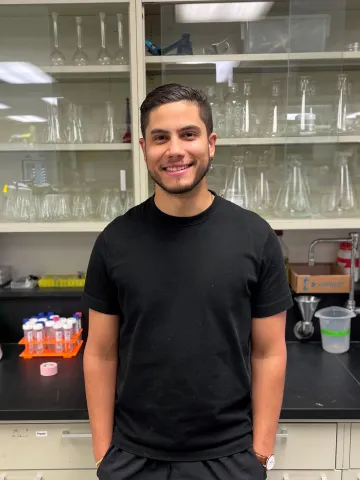When
Where

Presenter: Rodolpho Carvalho, 5th Year Graduate Student, Department of Chemistry and Biochemistry, The University of Arizona
Abstract: ATP-binding cassette transporters (ABC transporters) are one of the largest protein superfamilies, crucially involved in the exportation of a wide range of substances. They are regulated by ATP binding and hydrolysis, as well as tight phosphorylation to catalyze biosynthetic precursors, vitamins, lipids, and drugs across membranes. ABC transporters when dysfunctional can mediate multidrug resistance, cystic fibrosis, and play a role in inherited human diseases. Within the ABC family, the Yeast Cadmium Factor 1 (Ycf1) acts in cell homeostasis by transporting glutathione upon oxidation to maintain redox balance. Additionally, this transporter is a major model protein in the field, which presents structural homology to the Cystic Fibrosis Transmembrane conductance regulator (CFTR), as well as similar structural regulation to the medically important P-glycoprotein (P-gp). Recently, our group has reported two cryogenic electron microscopy structures of Ycf1 at 3.4 Å and 4.0 Å in inward-facing open conformations. Even though much of the structural architecture is now revealed by electron microscopy, the intrinsically disordered regulatory domain (R-domain) was not fully elucidated. This phosphorylated region is believed to play a major role in regulating conformational change and substrate binding and release. Here, we further characterized the R-domain region by cryo-electron microscopy by stabilizing the structure through phosphorylation. Also, we aim to elucidate the outward-facing conformation through the binding of ATP, this is another relevant conformation for the turnover cycle of this protein. Electron microscopy images have been processed and classified for the structural elucidation of the phosphorylated protein at 3.5 Å. Altogether, electron microscopy based models can be successfully used to map the structural basis of transporters membrane proteins and further address multiple biological questions.
Short Bio Sketch: Rodolpho is an international student from Brazil, he obtained his bachelor's degree in Biotechnology from Federal University of Goias and the California State University San Marcos. He is interested in the intersection of biotechnology and structural biology. He has been part of the Tomasiak Group since 2019 working with clinically relevant membrane proteins. He was recently awarded for his presentation at the Arizona Imaging and Microanalysis Society Meeting for demonstrating advanced skill and technique in microscopy.






